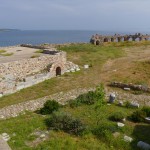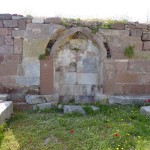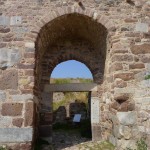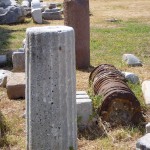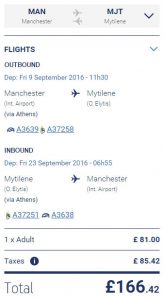 As most of you will know, there are a reduced number of charter flights to Lesvos in 2016 and 2017. Don’t despair! You can still get here from Heathrow, Birmingham and Manchester. You can use the Aegean Airlines Low Fare Calendar to find real bargains. Continue reading
As most of you will know, there are a reduced number of charter flights to Lesvos in 2016 and 2017. Don’t despair! You can still get here from Heathrow, Birmingham and Manchester. You can use the Aegean Airlines Low Fare Calendar to find real bargains. Continue reading
Tag Archives: Mytilene
Mytilene
Many visitors to Lesvos only see Mytilene on the way to and from the airport. In my humble opinion, this is a mistake. It has a fascinating history and is a bustling island capital. This is reflected in the number of places around the city that are worth visiting.
If you don’t believe me, check out this e-guide to Mytilene.
The guide is a couple of years old but is still a great list of must-see locations as little has changed. Print it out, bring it with you, tick off the places you have visited and then send me a report [please].
Do you know of any other guides to Lesvos that can help visitors make their plans? Please share them here so that people get the most out of their visit.
Mytilene Castle
If you want information about Mytilene Castle, please visit the new page
You can find it in the “Things to do” – “Ancient Sites” section.
There is even a map showing the location of the entrance.
Mytilene Kastro
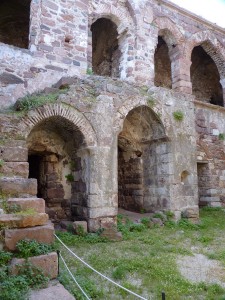 Mytilene Kastro (Castle), located on an ancient site where there was once reputedly an acropolis, is perhaps the greatest treasure of Lesvos and ample time should be allowed to explore the extensive ruins. The main public access is off Odos Novembriou and the entrance fee is such a bargain at €2. It is also worth splurging another €6 (2011 prices) on the souvenir guide book, although all the buildings and features have explanatory boards – with most items described in English. It does pay to wear sturdy shoes to visit the site, take care where you put your feet and stay away from edges of walls – please beware of crumbling stones and after any rain, it could also be slippery.
Mytilene Kastro (Castle), located on an ancient site where there was once reputedly an acropolis, is perhaps the greatest treasure of Lesvos and ample time should be allowed to explore the extensive ruins. The main public access is off Odos Novembriou and the entrance fee is such a bargain at €2. It is also worth splurging another €6 (2011 prices) on the souvenir guide book, although all the buildings and features have explanatory boards – with most items described in English. It does pay to wear sturdy shoes to visit the site, take care where you put your feet and stay away from edges of walls – please beware of crumbling stones and after any rain, it could also be slippery.
The Kastro covers a massive area which from all angles and corners affords excellent views over the city, the coast and across the sea to Turkey. It is itself a major landmark from all over Mytilini, from the coastal roads north and south and especially from the air as you fly along the coast past the city en route to/from the airport.
The Kastro sits on a large promontory, at one time effectively an island as it was separated from the city by a canal that ran between north and south harbours roughly along what is now Ermou Street. The complex had three main building stages – Byzantine, Genoese and Turkish. The oldest section is the Epano Kastro (Upper Castle), this being the main fortified enclosure. Here were constructed the main administration buildings and religious housings, including the Christian church of Agios Ioannis whose ruins were later used as the base for the construction of a mosque. Dating from 1373 and being the work of Francesco Gatelussi, the Mesaio Kastro (Middle Castle) encompasses several imposing buildings – a military hospital, a prison, the powder magazine, the Ottoman Theological School, the domed monastery (home to the Ottoman monks), and the cistern storage facility for the water supply. The Kato Kastro (Lower Castle) dates from 1644, constructed to protect the north harbour and was accessed from the middle castle via a Byzantine gate.
On our visit we meandered around taking dozens – no hundreds – of photos, peered at the ruins of the vast complex of buildings, climbed up the walkway onto the walls and generally had a good mooch around. There was a man cutting the grass and decapitating wildflowers for which I silently cursed him as I think these sites are made extra special by the profusion of flowers which are now the residents where people once lived and worked. Life goes on.
Having arrived at opening time we spent a good two hours exploring, with the site to ourselves, after which we walked up to the northern harbour, where the castle boundary meets the sea and you can see evidence of the ancient walls and breakwater stretching out under the water.
Walking back along the coast road 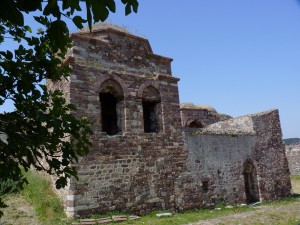 which runs below the castle you pass through the Kato (Lower) Kastro complex, with its ruined mansions and a bathhouse which is being restored. This part of the castle, including an Ottoman gate, was partially demolished to make way for this city relief road back in the 1960s. Today they would no doubt be compelled to find another solution! This had originally been a dirt road, but has now been surfaced and provides an attractive alternative route to Novembriou Street, with the sea on one side and the green pine-clad slopes up to the impressive castle walls on the other.
which runs below the castle you pass through the Kato (Lower) Kastro complex, with its ruined mansions and a bathhouse which is being restored. This part of the castle, including an Ottoman gate, was partially demolished to make way for this city relief road back in the 1960s. Today they would no doubt be compelled to find another solution! This had originally been a dirt road, but has now been surfaced and provides an attractive alternative route to Novembriou Street, with the sea on one side and the green pine-clad slopes up to the impressive castle walls on the other.
There is a small museum on-site with displays of pottery, coins and artefacts found during excavations.
How to find Mytilene Castle
100 years ago
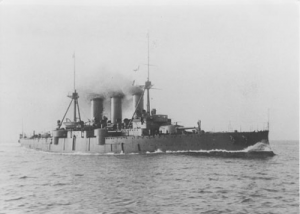 On the 8th of November 1912, Admiral Pavlos Kountouriotis arrived with a squadron of the Royal Hellenic Navy led by the battleship Georgios Averof. It marked the beginning of the liberation of Lesvos.
On the 8th of November 1912, Admiral Pavlos Kountouriotis arrived with a squadron of the Royal Hellenic Navy led by the battleship Georgios Averof. It marked the beginning of the liberation of Lesvos.
The battleship went on to serve in two world wars and is now a floating museum in Athens.

